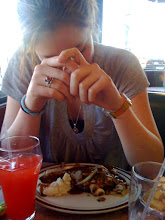


my grandfather finds equality in new configurations.
the renaissance humanistic movement of the early fifteenth century centered around the words of Leon Battista Alberti, who held that "a man can do all things if he will." within this theoretical framework, individuals who strove to excel in disciplines of intellectual, social, artistic, and athletic concern were held as gifted or genius. today, we use the term renaissance man as a means of describing individuals who embody the innate and infinite capacity for learning described by early humanists.
I revisited the term in an attempt to provide a fitting description of Mark’s brief, but accomplished, life, though I still remember the first time I heard it. we were in baldy’s second hour class (at Greengates in Mexico), and he was talking about leonardo davinci, calling him the prime example of a reh-nay-sonce man. when I looked down at the backwards cursive blueprints printed in my textbook, I didn’t think of beards or walking on water, but instead of my grandfather’s broad, square hands.
my grandfather, hulki aldikacti (all-duh-kahtch-tee), has lived a life that would make any renaissance humanist proud. he was born into a wealthy family in 1934 in Istanbul, Turkey; in his early life, not only did he excel in school, but was also an accomplished gymnast and had already constructed his first motor boat by scratch at the age of twelve.
by the time he was eighteen or nineteen, my grandfather had finished university in turkey, and decided to move to the united states to study engineering here at the university of michigan. the picture of him leaning against the car was actually taken somewhere on campus sometime in the early 1950’s. my grandfather’s drive to produce work that represented nothing less than his absolute best effort led to his employment at general motors (no pun intended).
http://www.nytimes.com/1983/02/08/science/detroit-innovation-in-bold-stroke-produces-car-with-shell-of-plastic.html?sec=health
in 1983, the above new york times article was published. the Pontiac fiero represented my grandfather’s constant search for efficiency and innovation. its design was unlike that of any previous produced automobile; rather than using steel body plates which were expensive to repair and produce, the fiero relied upon dozens of plastic plates that could be replaced easily and cheaply. with its sporty look, energy efficient engine, and low sticker price, the fiero was chosen by car and driver in 1984 as one of the ten best cars in the year, and was also chosen to be the indy 500 pacecar that same year. my grandmother was excited because she got to spend the weekend with that year’s indy 500 celebrity sponsor, paul newman.
alongside his successful career, my grandfather had always pursued his interests in art and design. when he decides he wants to do something, he follows through; his garage is full of tools and machines to do everything from delicate woodwork to carving marble sculptures. sometimes we laugh at him, because he goes through phases, for example, the arctic tundra, and we all get a marble polar bear or a painted wooden penguin. his work is beautiful, though, always beautiful.
I was at their house three summers ago, when all of a sudden a UPS truck pulled into the driveway with the biggest box I had ever seen. as the ups guy, my grandfather, and I struggled the box into the garage, he told me he had decided to build a boat. when he said boat, he wasn’t talking about a little rowboat, but rather a twenty four foot long mahogany bottom old-style chris-craft. a year later when it was finished, he took us for a ride. my grandfather was not a good driver; my father’s imitation of a little girl being towed on a tube in front of us involves shrieking “daddy, don’t stop!! go faster!!”
our house is full of the things he has created. if you were to visit for dinner, you would first encounter him in the intricate, hand-carved mahogany front door, and if you were served hors d’oeuvres, you might notice the coffee table he made for my mother’s sixteenth birthday, and when your plate was set in front of you, if you looked down, you’d see a garden in the wood beneath the glass.
when he turned seventy-five, he told us he wasn’t taking any shit from anyone. it was funny, not because he said shit (one of his favorite words), but because he couldn’t take shit from anyone if he tried. my grandfather does not tolerate anything less than honesty and as such, despite his strange tendencies and fox news habit, moves through life with fairness. everything he does has a purpose, and for that, among other things, I am proud to be his granddaughter.

No comments:
Post a Comment